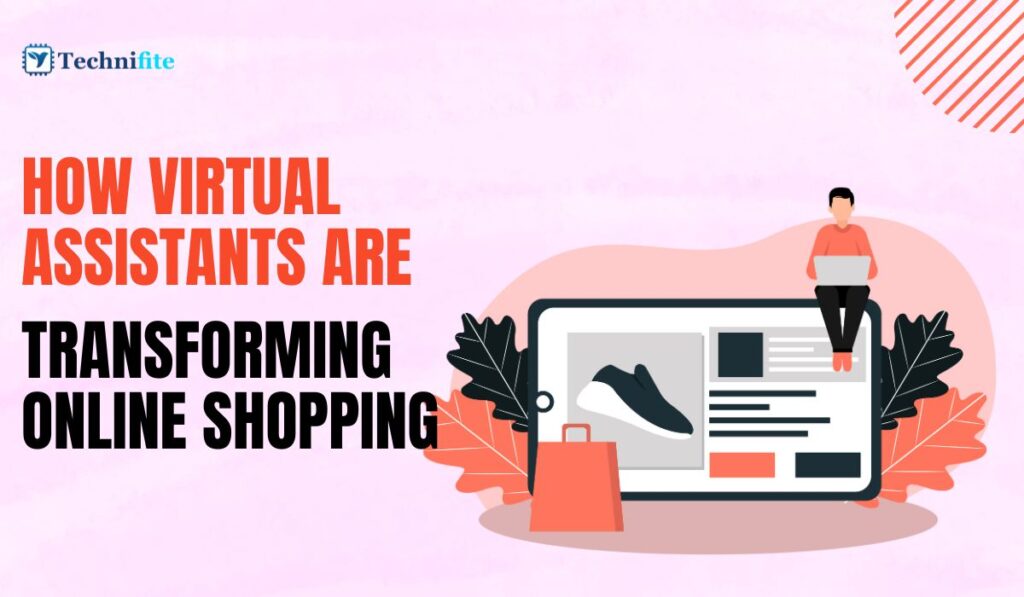How Virtual Assistants are Transforming Online Shopping: In the not-so-distant past, talking to your device and having it understand your needs seemed like something straight out of science fiction. However, this futuristic concept has become an integral part of our everyday lives thanks to rapid advancements in artificial intelligence and natural language processing. With the rise of virtual assistants like Amazon’s Alexa, Apple’s Siri, Google Assistant, and others, voice commerce, or v-commerce, has emerged as a transformative force in online shopping.
The Evolution of Virtual Assistants
Virtual assistants have come a long way since their inception. Initially, they were primarily used for setting reminders, sending texts, or making phone calls. However, as AI technology improved, their capabilities expanded exponentially. Today, these virtual helpers can do much more than just basic tasks – they can control smart home devices, provide real-time weather updates, offer cooking tips, and even assist in online shopping.
The Convenience of Voice Commerce
One of the primary reasons behind the growing popularity of v-commerce is its unparalleled convenience. In a world where time is a precious commodity, the ability to simply speak your needs and have them fulfilled within moments is a game-changer. Voice commerce simplifies the entire shopping process. Instead of navigating through complex websites or typing out lengthy searches on mobile screens, users can now vocally communicate their requirements, making the shopping experience more accessible and enjoyable.
Personalized Shopping Experience
Another significant advantage of v-commerce is its level of personalisation to online shopping. Virtual assistants, powered by advanced algorithms, analyze user preferences and purchase history. This data is then used to provide tailored product recommendations. For instance, if a user frequently orders organic products, the virtual assistant can suggest new organic items or exclusive offers related to their interests. This personalized touch not only enhances customer satisfaction but also boosts business sales.
Overcoming Challenges
While v-commerce offers tremendous potential, it’s not without its challenges. One of the primary concerns is security. To ensure user data is not compromised, voice assistants must be secure enough to handle sensitive information, such as credit card details and home addresses. Additionally, there’s the challenge of accurately understanding diverse accents and dialects. Companies investing in v-commerce technology must continually refine their algorithms to effectively cater to a global audience.
The Future of Voice Commerce
The future of v-commerce looks incredibly promising. As technology advances, virtual assistants will become even more sophisticated, capable of understanding complex commands and engaging in natural, human-like conversations. Integrations with augmented reality (AR) and virtual reality (VR) could enable users to virtually try on clothes, test out furniture placements, or even see how a new TV looks in their living room before making a purchase decision.
Furthermore, businesses are likely to invest more in v-commerce, integrating voice assistants directly into their online platforms. This integration will provide users with a seamless shopping experience, where they can ask for product details, compare prices, and place orders without ever leaving the virtual assistant environment.
In Conclusion
The rise of voice commerce represents a significant shift in online shopping. It’s not just a technological advancement but a revolution redefining the entire e-commerce landscape. As virtual assistants become more intelligent, intuitive, and integrated into our daily lives, the future of v-commerce appears boundless. It’s not merely a trend but a transformative force that will continue to shape the way we shop, making it more convenient, personalized, and enjoyable than ever before. So, the next time you’re thinking about ordering something online, don’t be surprised if you find yourself saying, “Hey, Alexa, order my favourite products,” because the era of voice commerce is here to stay. It’s only going to get better from here on out.
Frequently Asked Questions (FAQs)
1. What is Voice Commerce?
Voice commerce, or v-commerce, refers to online purchases using voice commands. It involves using virtual assistants like Amazon’s Alexa, Apple’s Siri, or Google Assistant to search for products, compare prices, and place orders through spoken interactions.
2. How does Voice Commerce Work?
Voice commerce operates through natural language processing (NLP) and artificial intelligence (AI) technologies. Virtual assistants use these technologies to understand user commands, search for relevant products in online catalogues, provide product details, and facilitate purchasing. Users can initiate voice commerce on smartphones, smart speakers, or other voice-enabled gadgets.
3. Is Voice Commerce Secure?
Security is a top priority in voice commerce. Virtual assistant developers employ robust encryption methods to protect sensitive user information like credit card details and addresses. Additionally, many voice assistants offer features like voice recognition and multi-factor authentication to ensure that only authorized users can purchase.
4. What are the Benefits of Voice Commerce?
Voice commerce offers several benefits, including convenience, personalized shopping experiences, and time efficiency. Users can shop hands-free, especially when using a screen is impractical, like while cooking or driving. Virtual assistants also analyze user preferences to offer tailored product recommendations, enhancing the shopping experience.
5. Can Virtual Assistants Integrate with Existing E-commerce Platforms?
Yes, virtual assistants can integrate seamlessly with existing e-commerce platforms. Many online retailers incorporate voice commerce capabilities into their websites and mobile apps. These integrations allow users to interact with the virtual assistant directly on the retailer’s platform, enabling them to browse products, ask questions, and complete transactions without switching between different applications or websites. Integration ensures a cohesive and user-friendly shopping experience.


